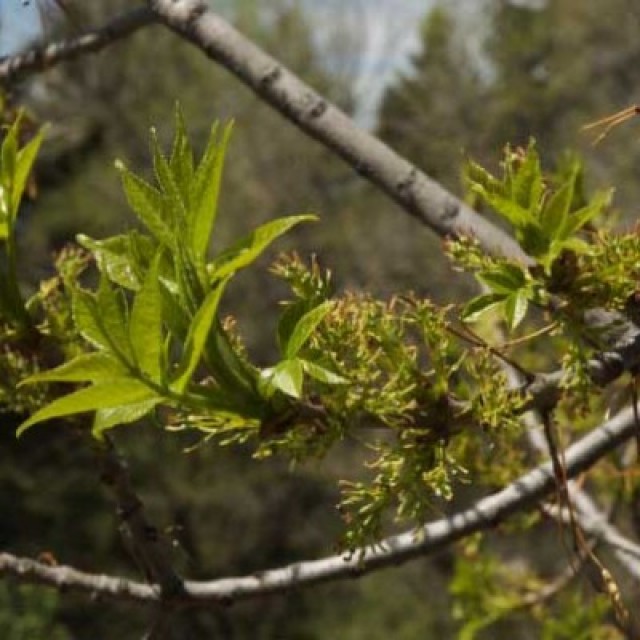COMMON NAME
green ash
SCIENTIFIC NAME
Fraxinus pennsylvanica
Plant family
Olive (Oleaceae)
Plant group
Deciduous Trees and Shrubs
663 reports
Identification hints
Green ash trees are common throughout the eastern United States. They are very common street trees that can grow up to 80 feet tall. The green leaves are "pinnately compound," in this case meaning that the "leaf" consists of 7-9 leaflets (3-4 sets of leaflet pairs along the stem and one leaflet at the end). Green ash flowers and leaves appear at roughly the same time during the spring and the flowers are inconspicuous, so look closely!
Did you know?
Green ash trees are wind pollinated. The male and female flowers occur on separate trees and the male flowers emerge before female flowers. Also, Green ash seeds require "cold stratification" in order to germinate, meaning that they must overwinter under cold temperatures or they won't germinate in the spring. In recent years, the Emerald ash borer, an invasive insect in the United States accidentally introduced in the 1990's, has become a threat to many types of ash trees.
- 2021 Chicago Botanic Garden. All Rights Reserved.
-
Creative Commons
BY-NC-SA 4.0 - Terms of Use
- Privacy Policy
- Data Sharing and Citation Policies
- 2021 Chicago Botanic Garden. All Rights Reserved.



